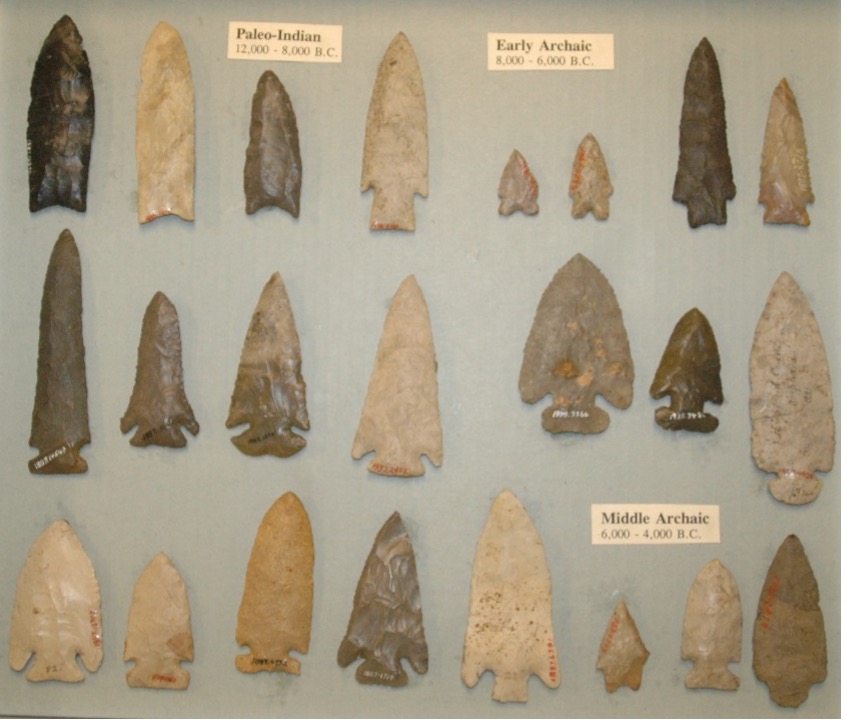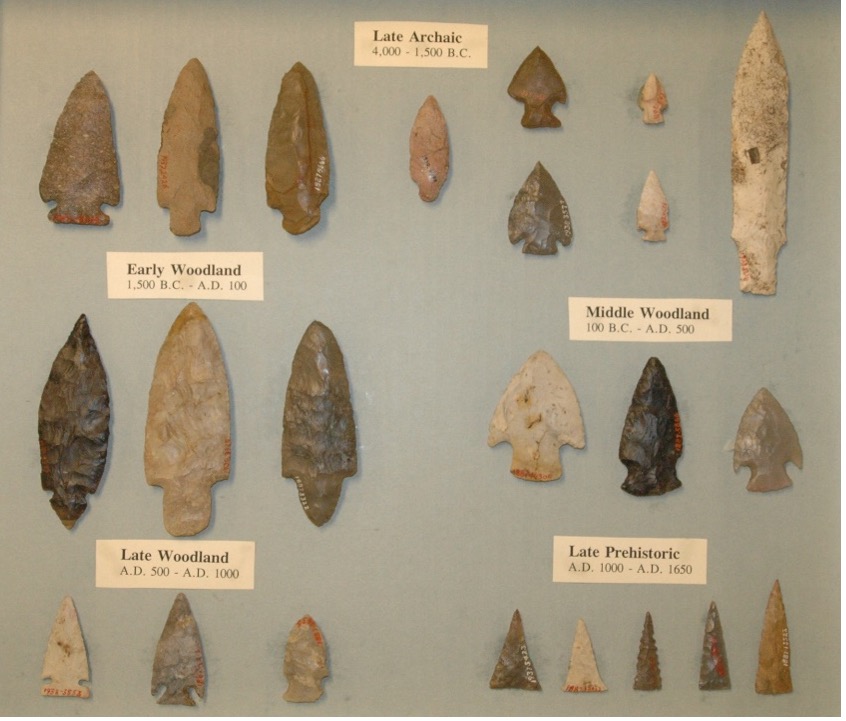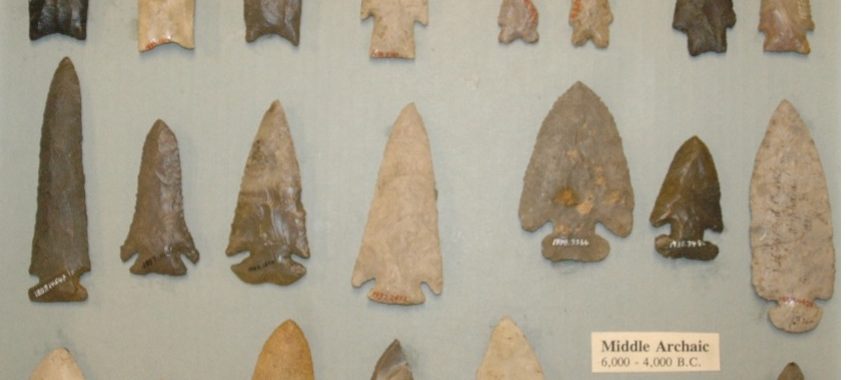
CMC Blog
Flake-Stone Artifacts
By: Tyler Swinney, NAGPRA Coordinator/Tribal Liaison
Archaeology is complex, multifaceted and diverse. Items of material culture are no exception as a nearly countless suite of artifacts were manufactured by prehistoric native Americans through the addition, combination and subtraction of raw materials such as stone, clay, bone, shell, wood and plant fibers.
Lithic tools were made through the modification of igneous, metamorphic and sedimentary stones. The availability of raw materials and the type of activity for which they were to be used dictated which stones were needed—some activities required sharp stones, while others required abrasive or hard stones.
Flake-stone tools were made from stones that have sharp edges when broken and include spear points, arrowheads, knives, scrapers and drills. It is possible to make flake-stone tools due to conchoidal fracture, a property of glass-like minerals that contain high quantities of silica and have crystal structures that are extremely small— micro- or cryptocrystalline. Simply put, stones with conchoidal fracture break in a predictable pattern that is similar to the break of a thick piece of glass.
Flake-stone tools were created through a process known as flint knapping, a descriptive term that refers to the preferred raw material and the reduction of stone through the removal of flakes by direct percussion or applied pressure. Flakes are not only the primary waste product—debitage—from flint knapping, but were often used as expedient blades due to their sharp edges and ease of manufacture. It is also important to note that flake-stone tools were constantly evolving and can be found in several different use-stages as they were re-sharpened and recycled. Regardless, flake-stone artifacts and debitage are made by a combination of percussion flaking and pressure flaking and represent the most abundant artifact assemblage found at prehistoric sites worldwide.
Percussion flaking involves striking flakes from a flint core with a hammerstone or billet made from antler, copper or wood, and is typically the first step in manufacturing a flake-stone tool. Percussion flaking is the basic mechanism used to roughly shape a piece of rock into a preform—the precursor of a completed tool.
Pressure flaking is the process of giving an artifact its finished shape and is a more refined technique than percussion flaking because the flint knapper can regulate the location and direction of applied force more efficiently. Pressure flaking tools were most often made from the tips of deer antlers (tines), which were strong enough to do pressure work, but soft enough to grip the stone’s edge. Pressure flaking is also the technique used to re-sharpen a flake-stone tool, and the primary technique used to recycle tools, such as converting a heavily-used knife or spear point into a drill or scraper.


Examples of flake-stone projectile points from the collection of Cincinnati Museum Center.
Museum Admission
Includes Cincinnati History Museum, Museum of Natural History & Science and The Children's Museum
| Adult: | $22.50 |
| Senior: | $15.50 |
| Child: | $15.50 |
| Member Adult: |
FREE |
| Member Child: |
FREE |
Members receive discounts!
Become a Member today to save on programs, exhibits and films throughout CMC.
Museum Hours
Open Thursday – Monday
10 a.m. to 5 p.m.
Closed Tuesday and Wednesday
Closed Thanksgiving Day and Christmas Day
Member’s-only early entry: Saturdays at 9 a.m.
Customer Service Hours:
Monday – Sunday, 9 a.m. to 5 p.m.


